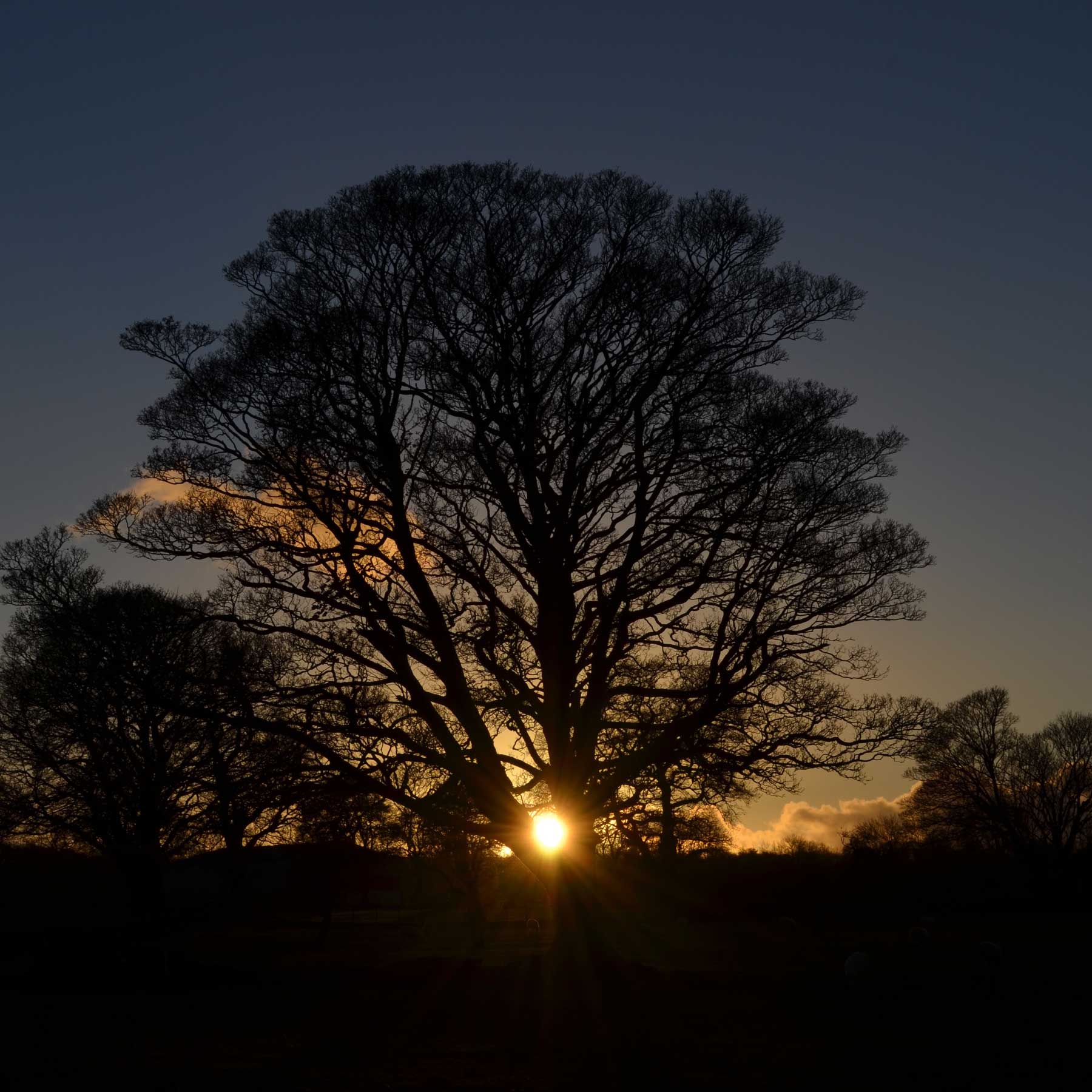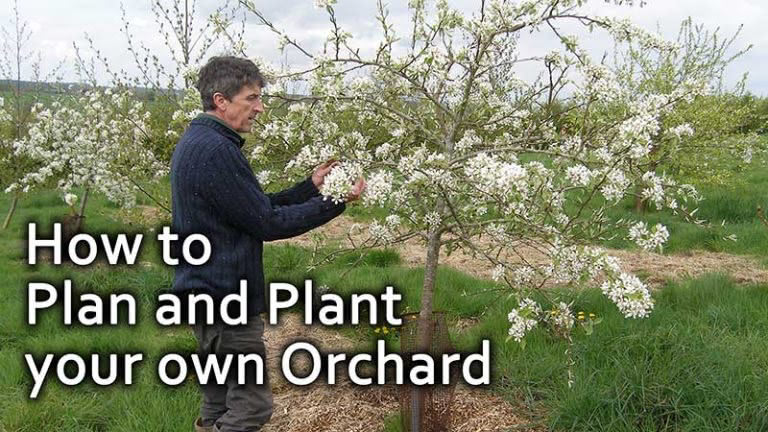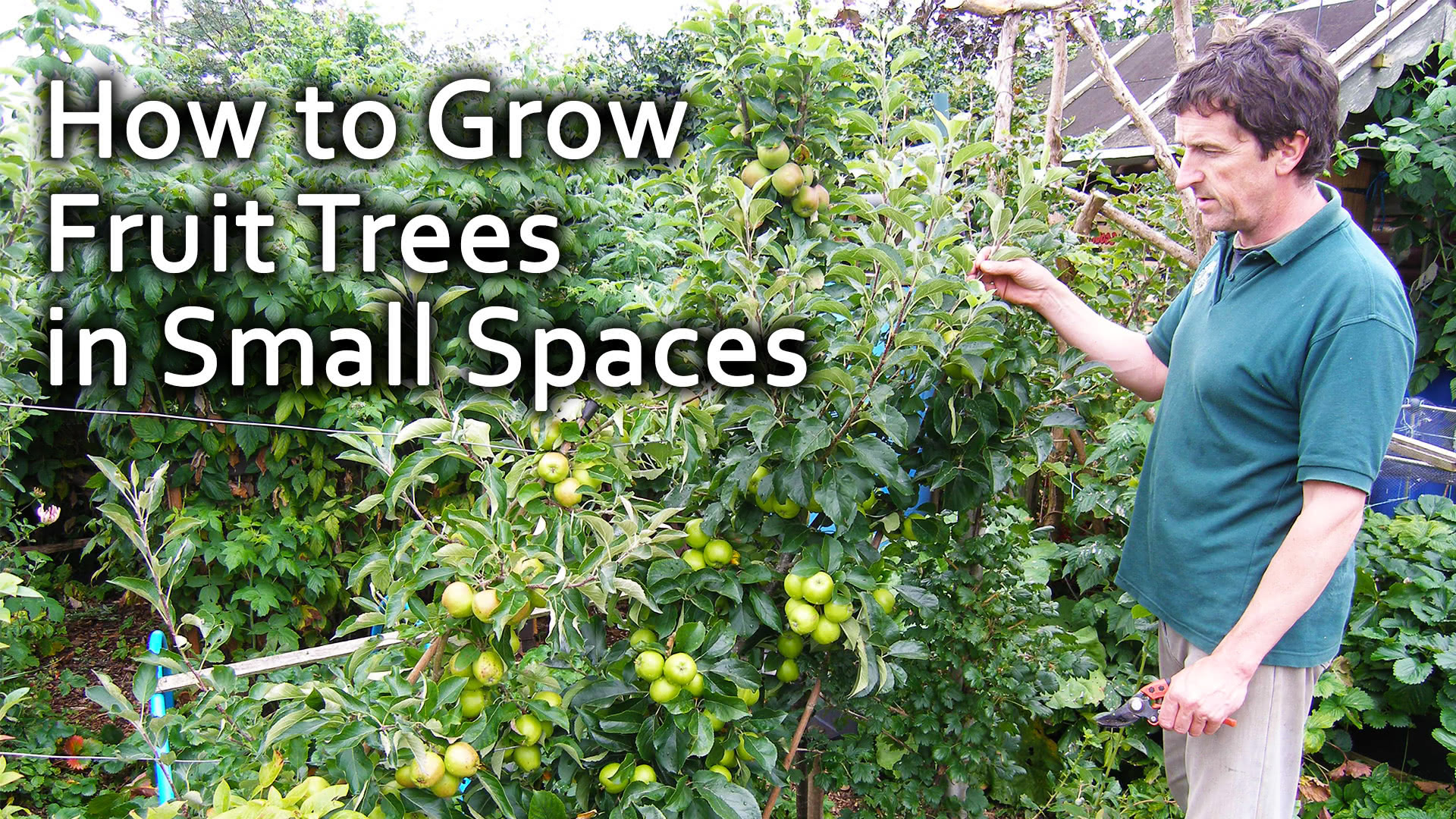Nestled between the sacred Manadkini hill and Tungareshwar Wildlife Sanctuary lies the Tansa Valley, a once biodiversity-rich region known for its medicinal plants and inhabited by the Warli tribe who date back 2500 to 3000 BC. Named after the Tansa river – one of the primary sources of drinking water for Mumbai City, the valley is home to many forest hamlets that now find themselves in a fragile geothermal and ecologically sensitive zone, at the edge of a forest, a river and a rapidly developing and encroaching city. Most of our work is centered here.
At Earth4ever Conservation Foundation, we work towards regenerating the ecology by spreading the knowledge of permaculture and regenerative systems and enabling the transition of marginal farmers into these systems. Permaculture design principles urge one to observe, integrate and value ‘edges’ in nature, that teem with biodiverse life, and ‘edges’ in society, that teem with the wealth of indigenous knowledge held within marginal communities.
The communities living here are primarily Adivasi people, forest dwellers whose ancestors depended on the forests for their existence. Knowledge of the patterns of nature and the indigenous species of medicinal herbs and wild foods, runs deep within them. But the forests they inhabited quickly vanished due to illegal felling of trees and selling off of rich topsoil to brick kilns for further development of the cities. Huge areas of forest land was cleared to make space for larger villages and paddy farming. As the forests disappear, the ecosystem services provided by them also disappear, leading to dried wells in the peak of summer, unpredictable river and rain patterns and extreme temperature fluctuations.
Caught at the edge of colliding worlds, the once freely roaming forest dwellers are today confined to cultivating rice paddy and working hard at multiple manual labor jobs to support their expenses. Farming provides them a meagre income, often incurring huge climate related losses. On the other hand, the forest once valued highly by the community, is reduced to a commodity, almost forgotten. With it, the inherent knowledge within the communities too recedes, making their relationship with the forest more and more tenuous.
However, come the monsoons, the community members actively forage seasonal wild foods from the forests around them! The joy and pride with which their eyes sparkle as they share recipes of these forest treasures, hints at the connection they still feel. Perhaps this is what we, as permaculturists, needed to tap into?
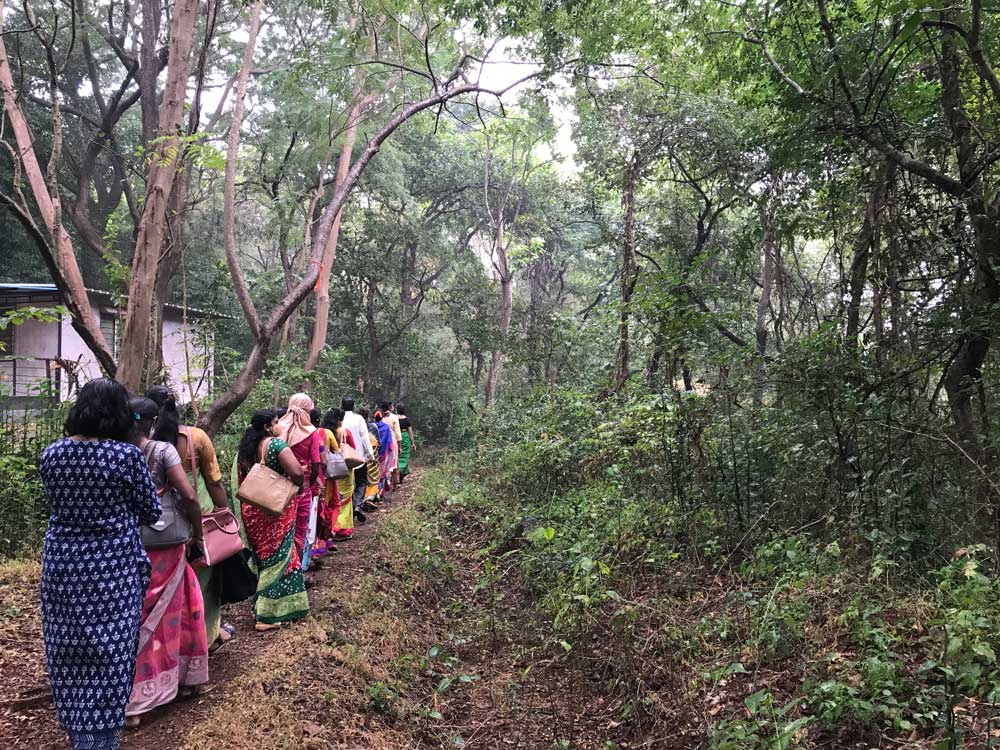
In 2019, we partnered with a marginal tribal farmer, Vinayak Vad, and his family, to create a one acre permaculture demonstration farm and training centre on their own farmland.
Strongly influenced by Clea Chandmal’s Forest Floor Way of farming, which embodies the principles of permaculture, we focused on building the rhizosphere – the area in the soil where tree and plant’s roots are found – and designed a space along with the family, that addressed many of the local challenges.
To manage the massive amounts of rain the monsoons brought, trenches and spillways were dug and then filled with organic matter to cultivate the rhizosphere that would ensure good drainage. The clayey, waterlogged and nutrient deficient soils, typical to this region, was addressed by mixing in large quantities of locally available biodiverse organic matter – rice husk, leaves of native trees and huge amounts of ‘weeds’ along with biodiverse manures. Inoculated with small handfuls of microbial rich soil from the adjoining native forests, the dead mud quickly transformed into a soil that was alive with biodiverse microbes and rich with nutrients.
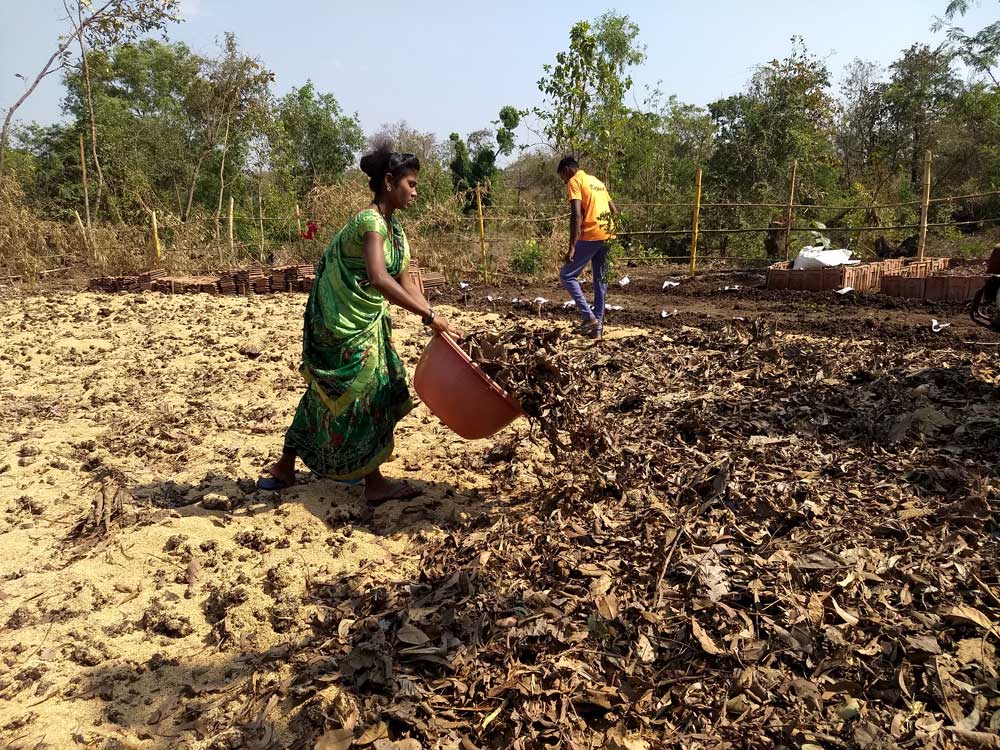
A biodiversity of plants and trees of diverse heights and shapes, smells and colors, and root systems were planted. Integrating traditional cropping ideas from Vinayak’s mom and knowledge of local greens from Vinayak’s dad, the mandala garden boasted a mix of local and exotic vegetables, herbs and fast growing fruits for the family’s daily consumption. Medicinal herbs were interplanted throughout the farm, and native species that popped up were left to thrive, creating a niche for biodiverse native flora and fauna. All the weeds on the site were regularly chopped and dropped to use as mulch.
In just six short months, the fallow land turned into a vibrant living space, attracting not only beautiful insects and bees and butterflies but also neighboring farmers and community members who hadn’t ever seen such a quick transformation! We began conducting demonstration walks and workshops to familiarize farmers with the concepts and techniques of permaculture and regenerative agriculture.
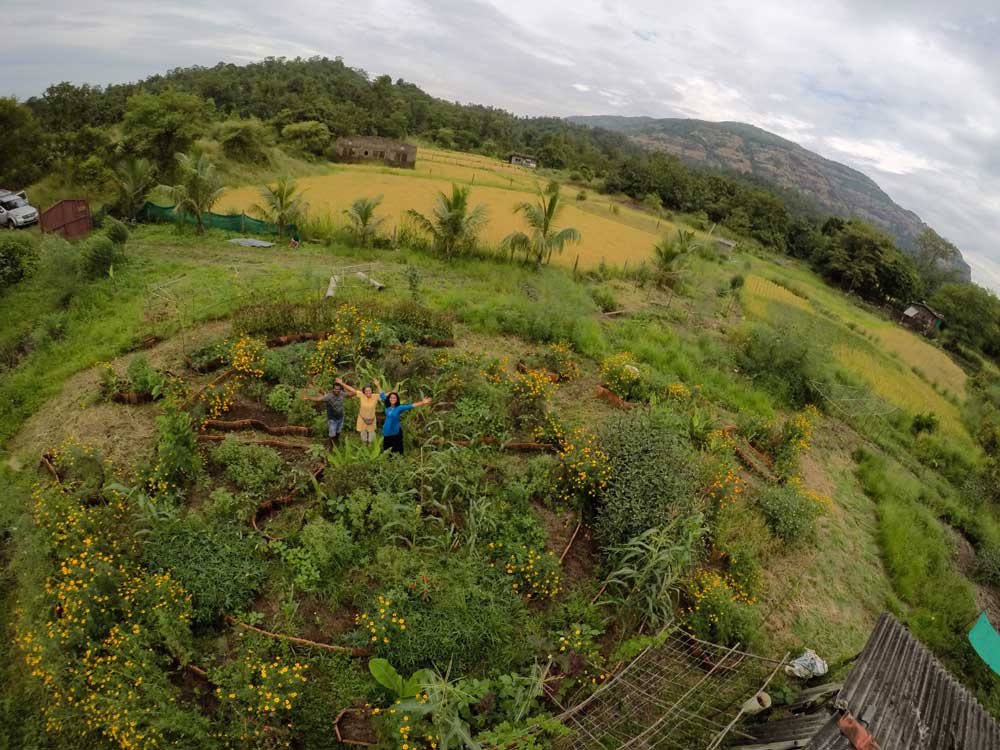
And then Covid-19 hit. Lockdown.
With travel restrictions, many hamlets in Tansa Valley faced an acute shortage of food. But Vinayak and his family were secure. They harvested fresh vegetables and fruits from their own farm and shared the bounty with neighbors. In the thick of lockdown, we were invited to facilitate a kitchen garden project spearheaded by 15 women farmers associated with the dedicated local NGO Sukhbhumi India Trust who had attended one of our workshops. Sukhbhumi’s team comprises of members of the community themselves, working for the last 15 years in the field of health, nutrition, chemical-free farming & small-scale food processing. Little did we know that our young demonstration farm would have such an impact and lead to a beautiful partnership that continues to grow stronger!
We are currently establishing 10 pilot micro food forests (2000 sq. ft.) that will serve as demonstration sites for neighbouring farmers. These sites have already hugely benefitted from the coming together of indigenous knowledge and regenerative practices. When the heavy rains affected the young vegetable saplings in the syntropic agroforestry inspired plots, the women immediately substituted them with native and wild tubers that thrived in that environment.
Our partnership with the Sukhbhumi team gives us inside access to the traditional knowledge systems, culture, growing habits, mindsets and challenges faced by the community. Their deep personal understanding allows us to co-design locally relevant solutions in a participative process with them and the farmers on-ground.
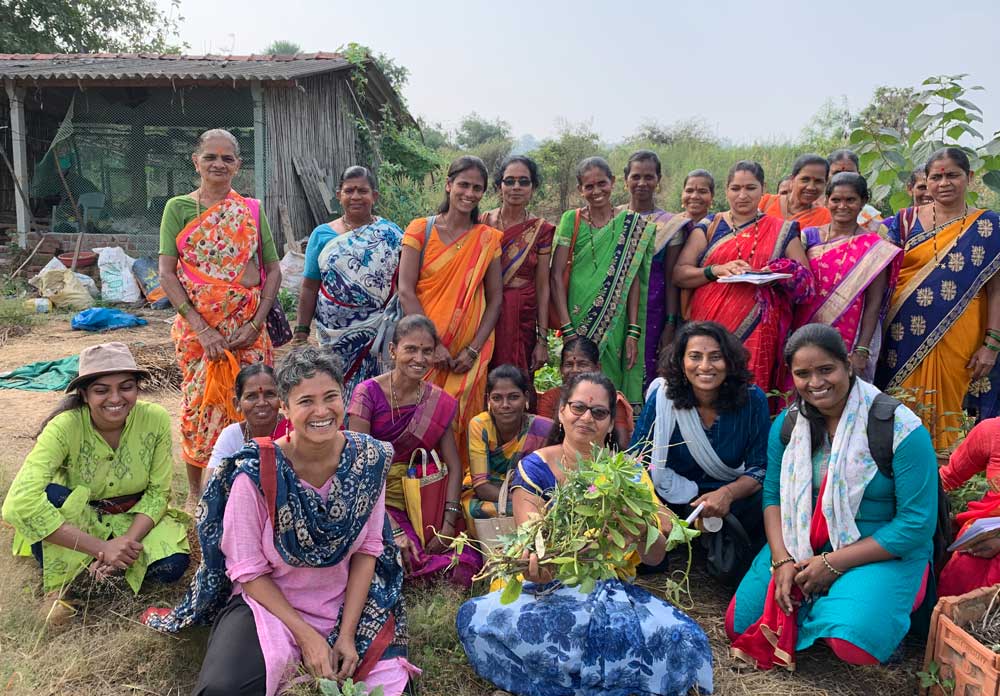
Slowly, but surely, we are seeing a change in the mindset of the community.
Observing the forest, learning from it and appreciating its value is an integral part of our process. There was a time one of the farmers was considering chopping down a native Red Cotton Silk Tree on their plot, but once they noticed the organic matter that the tree provided and the variety of birds it attracted, they decided against it, and instead, our whatsapp group is now regularly flooded with pictures of the majestic tree.
With Sukhbhumi’s outreach of more than a thousand indigenous farmers, every day we are discovering the benefits of working on the edge, valuing the marginal and its potential for creating resilient systems with a far reaching impact.
Principles of permaculture design revolve around working with nature. Agricultural systems are designed as an extension of the forest, with every attempt made to mimic the forest on the farm. Through a participative process, we can provide a platform for the community to share their indigenous knowledge, and integrate it with regenerative farming practices to build a resilient agricultural system, with the potential to provide food and nutrition security, along with opportunities for income, while regenerating the ecosystem and mitigating the effects of climate change.
Earth4ever is a winner of the 2022 Permaculture Magazine Award. Read more HERE.
